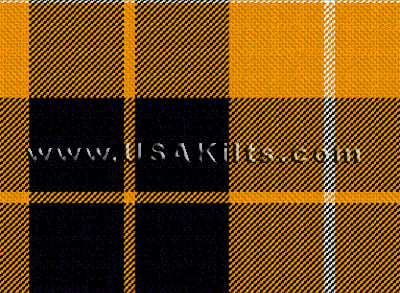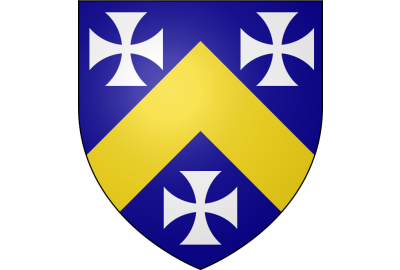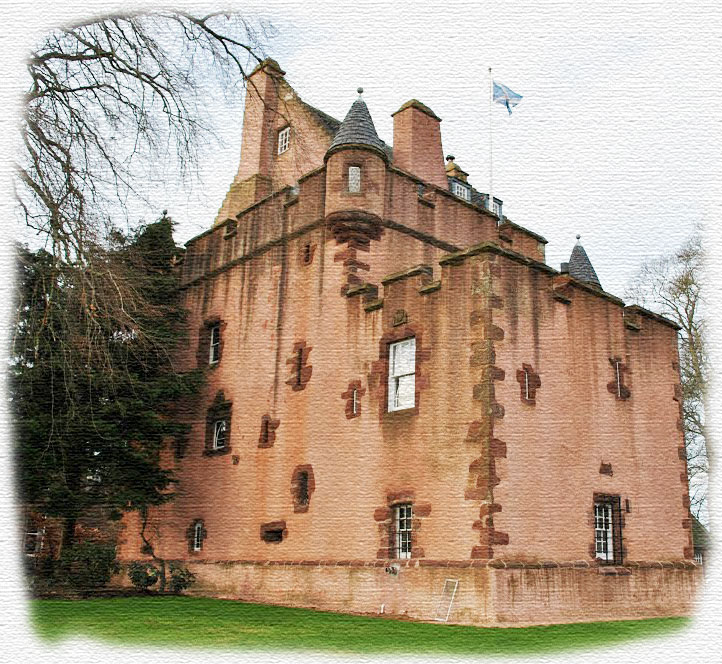Clan Barclay - Crest, Tartan and History
The Crest of Clan Barclay is rendered in Heraldic terms as "on a chapeau azure doubled Ermine, a hand holding a dagger Proper". Chapeau Azure is French for blue hat, so we have a hat (almost always drawn as a medieval cap - think Robin Hood) with a brim decorated in the heraldic pattern of 'ermine'. This pattern itself was a stylized way of representing the fur of an ermine (weasel) which was a common pelt used in luxury clothing in the Middle Ages. Above the hat is a human hand holding a dagger. The term Proper denotes that this design should be rendered as lifelike by the artist.
The Motto of Clan Barclay is Aut Agere Aut Mori (Latin for “Either action or death”) and the Barclays have always lived up to this, having a long history as courageous war leaders.
The Barclay Clan Tartan first appeared in the 1842 Vestiarium Scoticum created by the Sobieski Stewarts. It was also recored in J. Claude's 'Clans Originaux' (1880). The Sobieskis also provided us with a hunting Sett and this in turn eventually led to a Dress tartan which has become quite popular.

Barclay Hunting Sett (Modern Color Palette)

Barclay Dress Sett (Muted Color Palette)
The first spelling of Barclay is “de Berchelai”. Thought to be derived from the Anglo-Saxon for “beau” (beautiful) and “lee” (meadow), the name dates to the time of the Norman conquest when the family arrived with William the Conqueror.
The earls of Berkeley built Berkeley castle in 1153. It was so well-built, it was never taken until the British Civil War of the 17th century, also known as the War of the Three Kingdoms. In Scotland, the family settled in Towie, Mathers, Gartley and Pierston in Aberdeen. They also settled in Collairnie in Fife.
Walter de Berkeley served as chamberlain to King William the Lion during the War of Independance in 1165. Sir David Barclay served Robert the Bruce in several battles until taken prisoner at Methven.
In the 17th century, Colonel David Barclay, first Laird of Urie, fought both abroad (for the King of Sweden) and later at home in the British Civil War during which he commanded a regiment of horse on the Royalist side. Ironically, after the Restoration he was imprisoned in Edinburgh castle as “hostile to the government” but was later released. While in prison, he converted to the Society of Friends (the Quakers) and became a devout and respected leader and scholar defending the sect from persecution. In 1679, Charles II granted him a charter and the family lands in Urie became a free barony. David’s son, David Barclay of Cheapside, founded Barclay’s Bank.
The Barclay’s coastal trading business and ties to Scandinavia later led some of the family to settle in the Baltic. And in time one descendant, Michael Andreas Barclay de Tolly, became a Field Marshal and then Minister of War in Russia. He was responsible for the scorched earth campaign which decimated the armies of Napoleon in 1812. Despite being Scottish, he was even made a prince by the Tsar.




